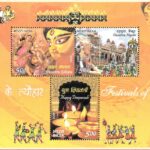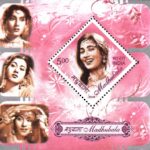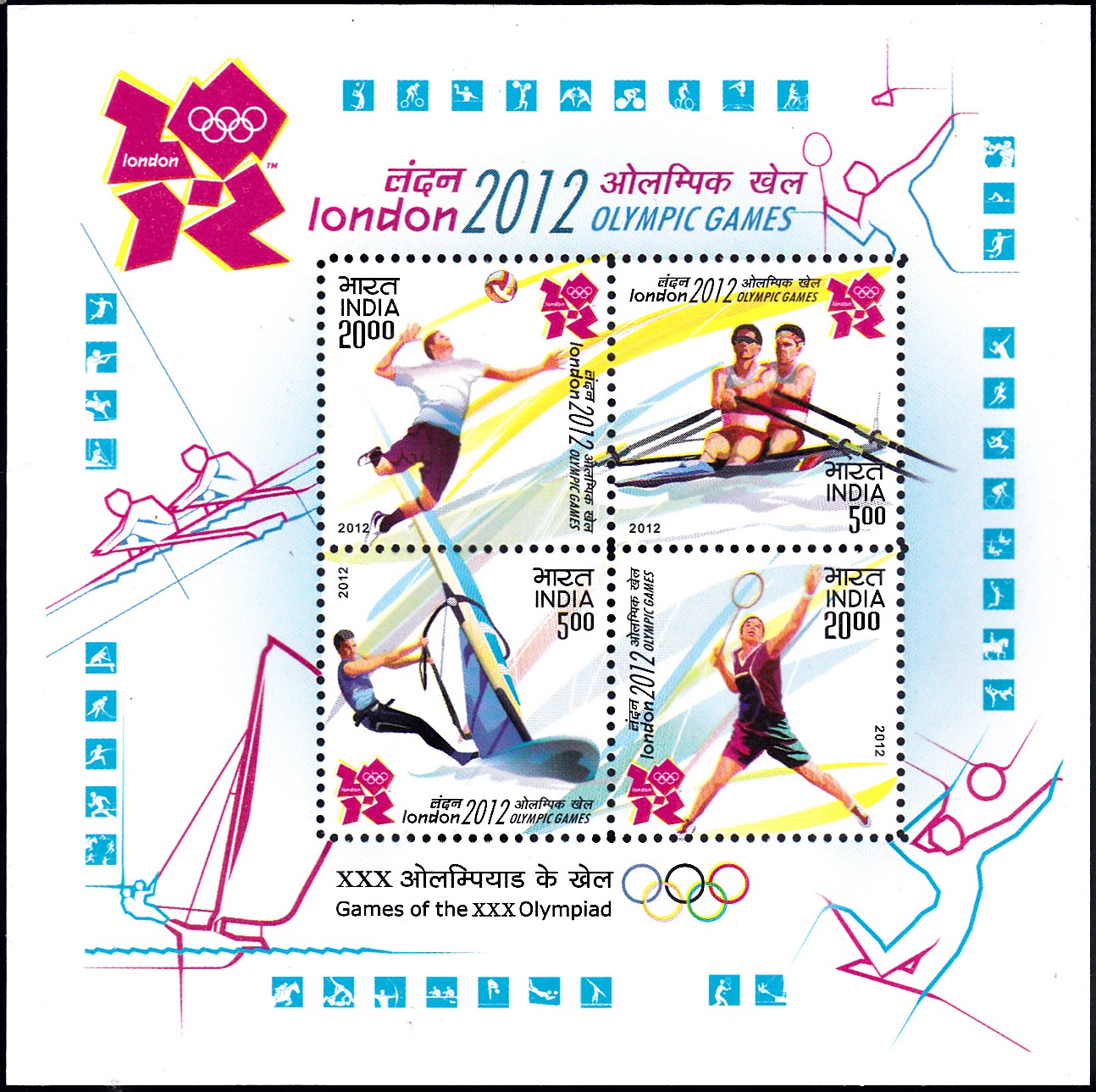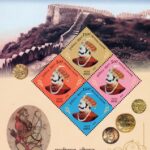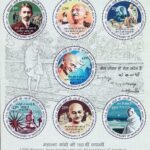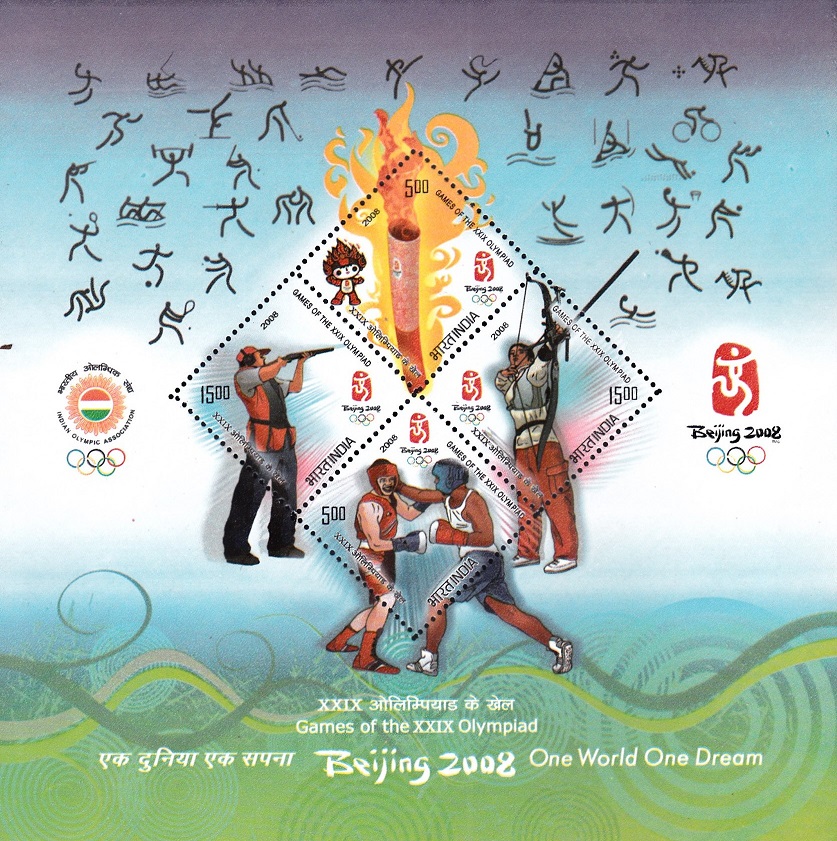
India in XXIX Olympiad, Beijing 2008
A Miniature Sheet consisting of 4 nos of commemorative postage stamps on the 29th Olympic Games, Beijing, China :
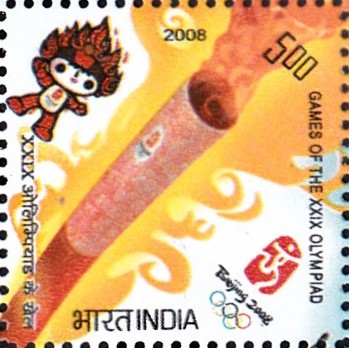
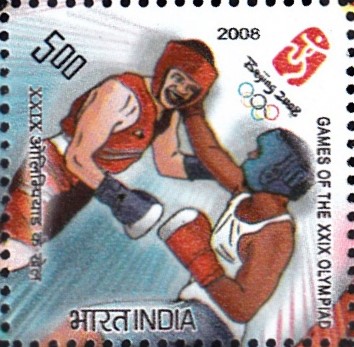
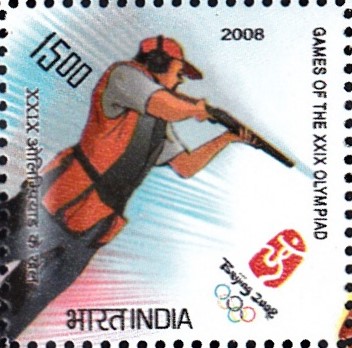
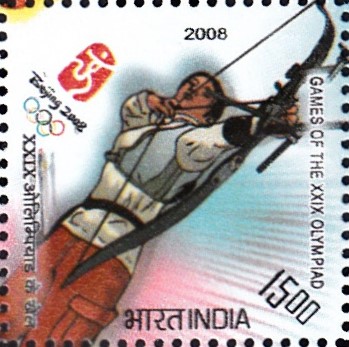
 Issued by India
Issued by India
Issued on Aug 8, 2008
Issued for : India Post is proud to commemorate the Games of the XXIX Olympiad, Beijing 2008 with issue of a set of four beautiful stamps.
Credits :
Stamp & FDC : Kamleshwar Singh
Cancellation : Alka Sharma
Type : Miniature Sheet, Mint Condition
Colour : Multi colour
Denomination : 500, 500, 1500 & 1500 Paise
Stamps Printed : 0.8 Million each
Miniature Sheet : 1.00 Million
Printing Process : Photogravure
Printer : India Security Press, Nasik
About :
- The theme slogan of XXIX Olympic Games 2008 “One World One Dream” fully reflects the essence and the universal values of the Olympic spirit – Unity, Friendship, Progress, Harmony, Participation and Dream. It expresses the common wishes of people all over the world, inspired by the Olympic ideals, to strive for a bright future of Mankind. In spite of the differences in colours, languages and races we share the charm and joy of the Olympic Games, and together we seek for the ideal of Mankind for peace. We belong to the same world and we share the same aspirations and dreams.
- The 2008 Summer Olympic Games, officially known as the Games of the XXIX Olympiad is a Summer Olympics event that was held in Beijing, People’s Republic of China from August 8 to August 24, 2008 and followed by the 2008 Summer Paralympics from September 6 to September 17. 10,500 athletes were expected to compete in 302 events in 28 sports, just one event more than was on the schedule of the 2004 games. The 2008 Beijing Olympics also marked the third time that Olympic events had been held in the territories of two different National Olympic Committees (NOC); at the 2008 Olympics, equestrian events was held in Hong Kong, which competed separately from mainland China.
- The Olympic Games were awarded to Beijing after an exhaustive ballot of the International Olympic Committee (IOC) on July 13, 2001. The official logo of the games, titled “Dancing Beijing”, features a stylised calligraphic character Jing, meaning capital, referring to the host city. The mascots of Beijing 2008 are the five Fuwa, each representing both a colour of the Olympic rings and a symbol of Chinese culture. The Olympic slogan, One World, One Dream, calls upon the world to unite in the Olympic spirit.
- The ancient Olympic Games were primarily a part of religious festival in honour of Zeus, the father of the Greek gods and goddesses. The festival and the games were held in Olympia, a rural sanctuary site in the western Peloponnesos. The athletes were all male citizens of the city-states from every corner of the Greek world, coming from as far away as Iberia (Spain) in the west and the Black Sea (Turkey) in the east.
- The ancient Olympic Games began in the year 776 B.C. when Koroibos, a cook from the nearby city of Elis, won the stadion race, a foot race 600 feet long. According to legends Heracles, the creator of Olympic Games in honour of his father Zeus, walked in straight line for 400 strides and called this distance a “stadion” (Latin: stadium, “Stage”) that later also became a unit of distance. That is why a modern stadium track is 400 meters in circumference – the distance a runner travels in one lap (1 stadium = 400m).
- For almost 12 centuries the Games were held in Olympia every four years. Thereafter the games went into oblivion. It took 1503 years for the Olympics to return. The first modern Olympics were held in Athens, Greece, in 1896. The man responsible for its rebirth was a Frenchman named Baron Pierre de Coubertin. To organise the Games, the International Olympic Committee (IOC) was established, with the Greek Demetrius Vikelas as its first president. It was the largest international sports event ever held until that time. The Greek officials and public were so very enthusiastic, that they proposed to have the monopoly of organising the Olympics. The IOC decided differently, however, and the second Olympic Games took place in Paris, France. Paris was also the first Olympic Games where women were allowed to compete.
- From the 241 participants from 14 nations in 1896, the Games grew to nearly 11,100 competitors from 202 countries at the 2004 summer Olympics in Athens.
- The Olympic movement uses many symbols, most of them representing Coubertin’s ideas and ideals. The Olympics Rings are the most widely used symbol. These five intertwined rings represent in unity of the five inhabited continents (with the Americas regarded as one continent). The five coloured rings on a white field from the Olympic Flag. The colours, white, red, blue, green, yellow, and black, were chosen such that each nation has at least one of these colours in its national flag. The flag was adopted in 1914, but the first Games at which it was flown were Antwerp, 1920. It is hoisted at each celebration of the Games.
- The Olympic Motto is “Citius, Altius, Fortius”, a Latin phrase meaning “Swifter, Higher, Stronger”. Coubertin’s ideals are probably best illustrated by the Olympic Creed:
“The most important thing in the Olympic Games is not to win but to take part, just as the most important thing in life is not the triumph but the struggle. The essential thing is not to have conquered but to have fought well”.
- Prior to each Games, the Olympic Flame is lit in Olympia, Greece and brought to the host city by runners carrying the torch in relay. There it plays an important role in the opening ceremonies. Though the torch fire has been around since 1928, the relay was introduced in 1936.
- The Olympic mascot, an animal or human figure representing the cultural heritage of the host country, was introduced in 1968. It has played an important part of the games since 1980 with the debut of Misha, a Russian bear.
- Today the Olympic Games is the most important and largest sporting event in the world. It is called “the longest lasting social activity that exists” and is followed by billions of spectators around the world. The modern Olympics have been growing constantly and new sports have been added to fit the needs of people.
Subscribe
Login
0 Comments


